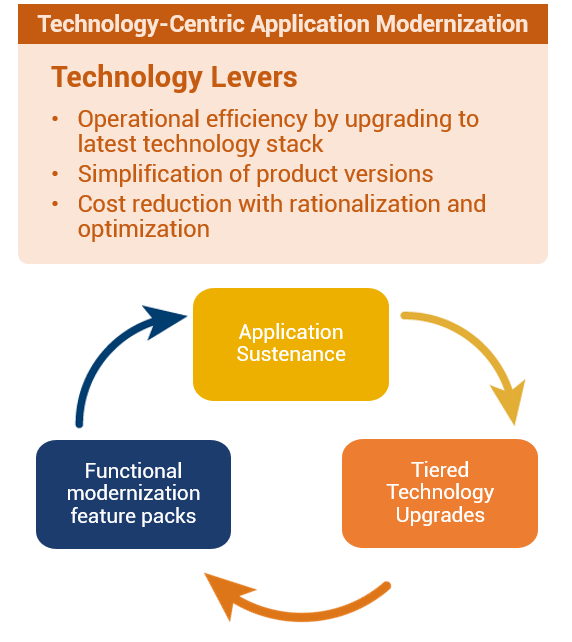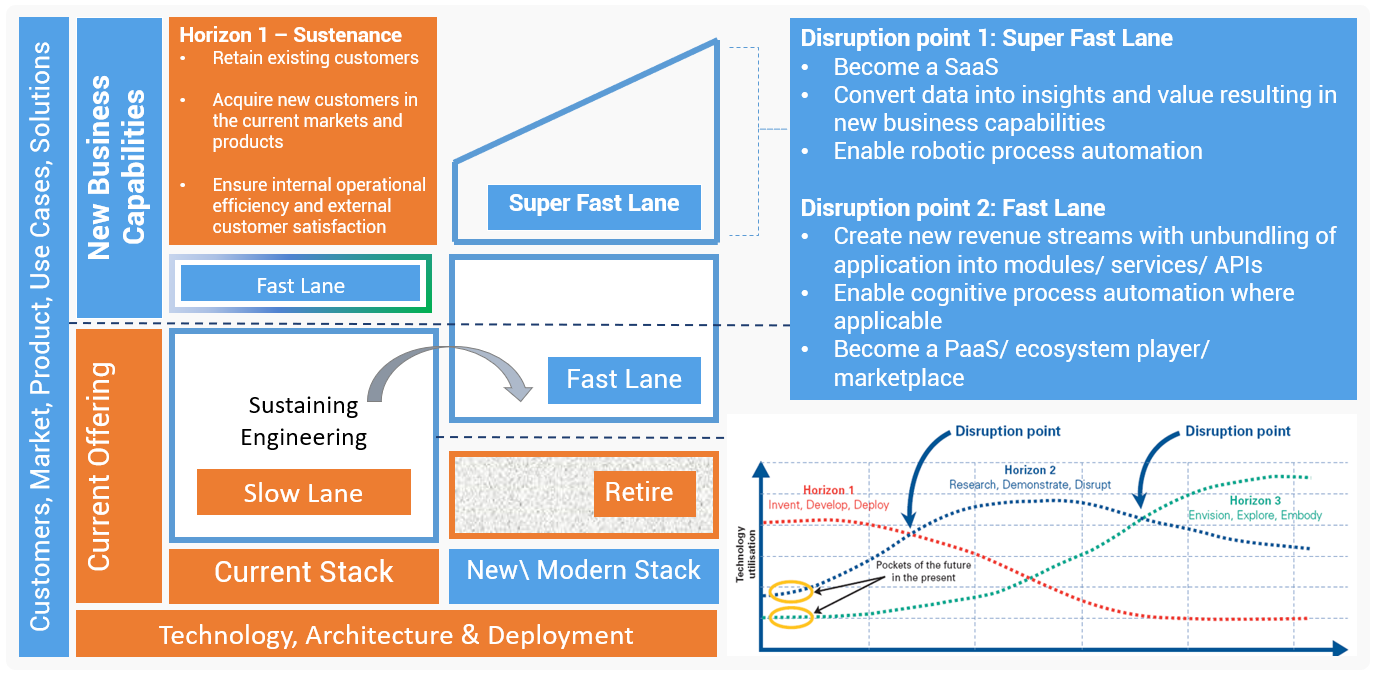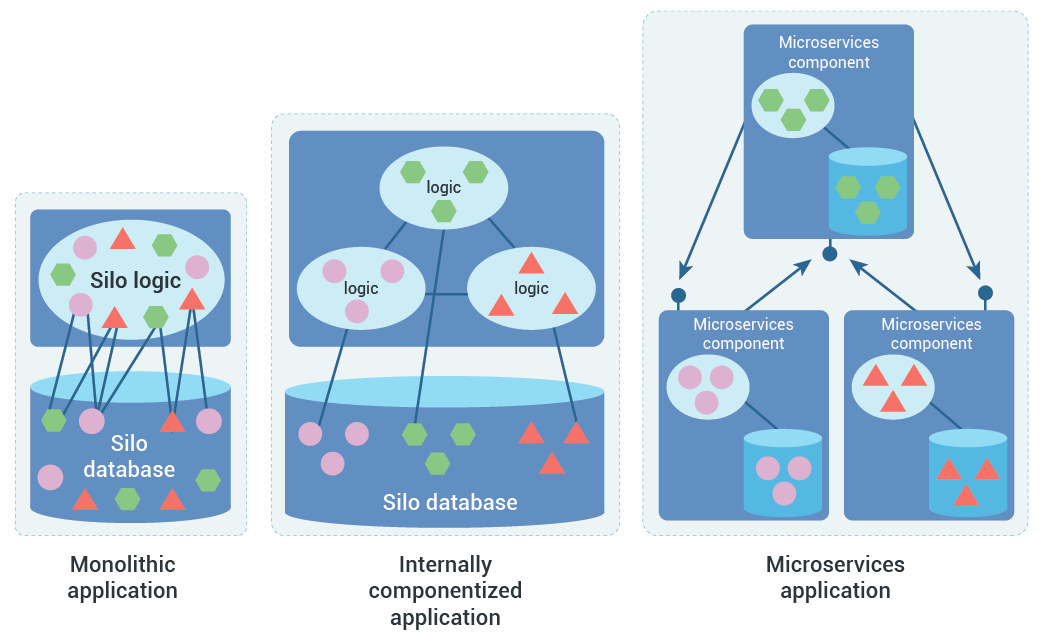What is Application Modernization?
It is the migration of legacy applications to new systems, applications, or platforms, perhaps integrating new functionality to older systems. Organizations modernize applications for many reasons; widening access scenarios, a digitalization requirement, or moving to a new IT infrastructure or API-based architecture. Whatever the reasons, modernized legacy systems must operate in sync with other application systems using, for example, Java or .NET.
Application modernization is a strategic decision factoring in organizational needs, priorities and budgets. Considerations include modernizing the application experience and access method and driving create new workflows around the application through integration and automation.

Modernizing the application code can be done with the help of analytics to increase programmer productivity, and improve performance. Modernizing dev, test, and production methods and platforms, either for individual applications or as part of a composite application, while leveraging new business models is another thought.
Modernizing Legacy Applications
Legacy applications are the backbone of a significant portion of many modern organizations; the downside of such software is that they can require a lot of maintenance and financial investments to keep them in running condition.
Legacy applications are used to gauge the performance of business operations. What if an organization wants to progress by staying in sync with technology, and continue making use of these technological tools to aid this advancement? In other words, in the era of the Cloud, legacy applications can come across as a little outdated, and their performance can remain restricted. However, the idea is to modernize these legacy applications, and speed up their processing prowess, to reduce costs and maximize productivity.
It is safe to say that organizations and DevOps teams have successfully trudged forward on the path of application modernization. Applications such as SAP, Siebel, PeopleSoft, etc., have been built in the form of unbreakable monoliths — this means that the data associated with these applications provides excellent data security and networking options to the organizations.
Application Transformation
While modernization focuses on sustaining existing business and meeting the needs of current customers in a catch-up mode, application transformation takes a fresh look at the product-market fit and explores new business opportunities with a long-term view. Transformation enables one to become a disruptor and a game-changer.
Continuous multi-speed, multi-horizon application transformation
Multi-speed IT delivery is required to support customers and prospects (innovators, early adaptors, etc.). Multi-horizon planning and delivery is required for swim-lane execution of multiple initiatives which will yield benefits at different times in the future.

Sustenance in slow lane
Supporting existing customers with the applications in production is as necessary as winning a new customer in order of magnitude. Sustaining engineering should be delivered with perfective maintenance, using the following principles:
– Deliver defect fixes with clean code and clean architecture principles
– Refactor code whenever possible
– Improve maintainability, changeability, documentation and migrate-ability
– Keep future business capabilities and target architecture
– Keep near zero effort migration approach
– Integrate with other solutions delivered in super-fast lane
Disruption in super-fast lane
Opportunities abound with business model innovation and adoption of digital technologies. In the super-fast lane, disruptive applications that can be created with new technology stack that are adjunct to the business capabilities of the core product are built fast and delivered as SaaS applications.
– Hosting the core product (financial SaaS) can be delivered to lock-in the customers with the core product.
– Data Science and Analytics wrapper and RPA wrapper for the core product can be delivered as Value added SaaS applications on the top of the hosted core product.
These options are just indicative and by no means exhaustive.
Disruption in fast lane
This may be compared with the traditional modernization, but the focus is business-centric, multiplatform, and continuous.
– Functionally decompose the application and develop a functionality baseline
– Develop new fine-grained services as appropriate
– Refactor application keeping in view the target application slowly into the intermediate stage and then to the final stage
Improve performance, scalability, resiliency, security of the application to make it fully modern.
The time required for the application modernization process depends on the scope of the project—how much code needs to be re-hosted versus transformed, and how many resources will be used at any one time. It often surprises people to learn that the process of transforming your code and data can actually be less than half of the overall application modernization effort. Projects are completed in four major stages, each of which can consume 25 percent or more of the overall effort.
Step 1. Discover. Simply put, the initial phase is the blueprint stage. During this phase, you gain a better understanding of your existing legacy environment, both from a technical and a business perspective. Without documenting how workloads and applications achieve your organization’s objectives and which parts of your current system will be needed in the future, you run the risk of missing key requirements in your modernization plan.
Step 2. Plan. During this phase, project goals and resource requirements are determined to build out the implementation roadmap. A comprehensive modernization plan includes:
– Detailed milestones for application source code and data conversion
– Complete mapping of all operational areas to ensure that required standards and procedures for operating and administering the new target environment are addressed
– An infrastructure solution designed to address reliability, accessibility and growth requirements
Step 3. Transform. This stage often receives most of the limelight because it’s when the actual application source, data and utility migration is performed. You will want to use the right mix of automated migration processes and adaptation to address differences between the legacy environment and your target platform. Your new infrastructure is typically installed and configured with your third-party software at this time. Test plans are reviewed in preparation for final cutover, and operations and administrative training also occurs during this phase.
Step 4. Implement. The importance of this phase is often overlooked partly because it follows all the action. However, testing, quality assurance and a detailed plan of production cutover steps all ensure modernization and migration accuracy—as well as alignment with initial assessment goals. During this stage, verifying new application functionality is critical to your success. Other factors like performance, security, scalability and reliability also help determine whether a modernized application will deliver to expectations while enhancing the user experience.
References:
https://www.idexcel.com/blog/tag/application-modernization-services/
https://blog.microfocus.com/enterprise-application-modernization-focus-areas/
Think beyond Modernization – Now is the time for Application Transformation!
https://www.cio.com/article/2597926/anatomy-of-an-application-modernization-project.html